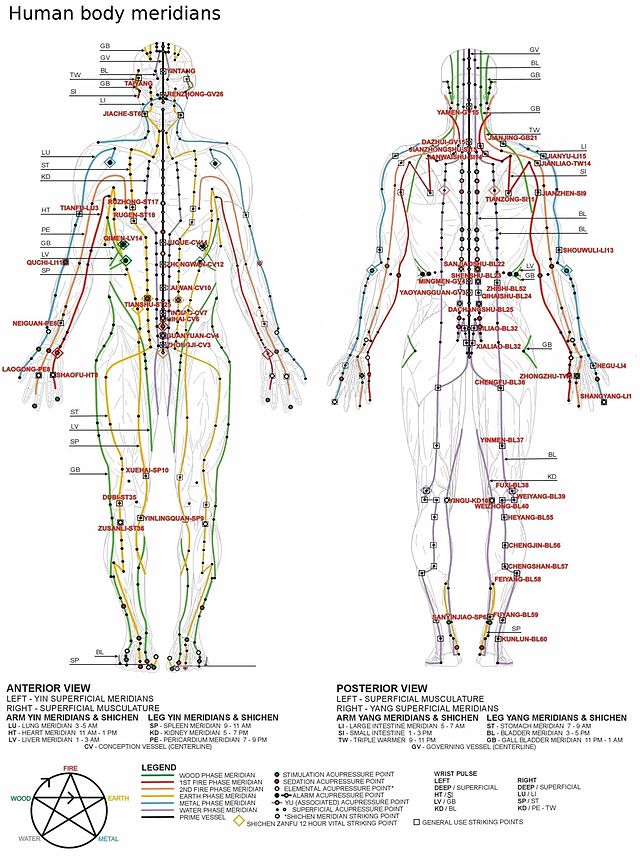Civilization Disease.
Let’s take a moment to appreciate a few modern medical miracles: open-heart surgeries, transplants, and blood transfusions; neural surgeries and tumor removal; thoracic surgeries and airway control. We can even perform plastic surgeries and genetic modification to change the biology of evolution!
Our achievements are amazing—and terrifying.
Even surrounded by the medical advancements of our modern culture that have helped us live longer and healthier—somehow, we still grow sicker than ever.
Here in the United States—despite all our advancements—we’re at an all-time risk for many life-threatening diseases. Cancer, heart disease, diabetes, and a whole bunch of neurological disorders like depression, bi-polar, and ADHD.
These diseases have one thing in common: inflammation.
To many of us, this may be obvious. But I’ve been amazed to find how deep this connection between illness and inflammation truly goes. So what really is inflammation, and why does it occur?
Most of us have a general idea. At its core, inflammation is a healthy response, increasing blood flow to areas of injury or infection.
This response helps the body rebound and also protect it against foreign agents. Like when you catch a “bug” and your body runs a fever to destroy the external invader. Or when you get a bad knock on the head and the area becomes inflamed as white blood cells race to the scene to mop up the wound, destroy bacteria, and mend tissue by promoting cell proliferation, or regrowth. Inflammation can happen because of physical exercise, or because of a complete lack thereof.
Point being, inflammation occurs for a variety of reasons. But contrary to popular belief, not all of these reasons happen because of external influence such as bacteria, viruses, or cuts and scrapes. The main cause that affects people more than any disease or clumsy behavior is stress.
When assessing if a tree is sick or stressed, a smart arborist is not going to look toward the leaves for the root of the problem, but at the roots themselves. So I asked the question—what is stress and where does it come from?
Stress is not a disease in itself. In fact, much like inflammation, it’s one of the beautiful tools our bodies have to keep us alive. Some stress is good. Stress hormones that flood our bodies when we become afraid, like cortisol and epinephrine, help to keep us sharp and vigilant when it’s time to focus.
But prolonged exposure to these hormones has a devastating effect on human biochemistry.
Scientifically, we know that stress is a fear response. Even though we aren’t really in danger of being eaten anymore, our daily stress factors—traffic jams, business deadlines, social standing, and media overload—promote this same sympathetic nervous system response.
However, these “stress stimuli” aren’t coupled with physical exertion like they used to be—we aren’t actively fighting or running away from these things. When physical activity was part of the equation, these hormones were quickly pumped through our blood and moved out of our systems. Nowadays, they linger inside as we try to navigate the modern world.
Too much epinephrine for extended periods of time can lead to a weakening of arterial walls, which breaks down the elasticity of our veins and arteries. This in turn leads to deep inflammation in the arteries and other organ problems. Harvard Health says, “Chronic low-grade inflammation is intimately involved in all stages of atherosclerosis, the process that leads to cholesterol-clogged arteries. This means that inflammation sets the stage for heart attacks, the leading life taker in America.”
Epidemiologists have now identified stress as a major factor in many common diseases — diabetes, strokes, heart disease, asthma, allergies, depression, obesity, and cancer, to name a few.
Part of the problem stems from the stress hormone cortisol. Immediately after a stressful experience, cortisol tells our brains that we are hungry and our bodies to hold on to certain fats and other nutrients.
This is because back in our more primal days, our bodies needed these things after a stressful experience. Running for our lives from a predator would naturally make us hungry, and our bodies knew that we needed some extra nutrients stored up so that the next time we were in danger, we’d have the extra fuel needed to survive.
Nowadays, this cortisol response is a gateway to obesity and other eating disorders.
Undoubtedly, we can identify stress as a silent and socially-acceptable killer. But what is the intimate connection between stress and inflammation?
Cytokins, the molecules associated with inflammation, don’t necessarily cause the same bodily response that stress hormones do. But much of the time when the body is stressed, inflammation is also present, just as it is present in all of these stress-related diseases.
A great example is our gastrointestinal health, or “gut health.” When our gut becomes stressed, white blood cells are sent to rebuild and protect the body, but they also contribute to inflammation.
A main cause of this gut stress is our addiction to food and snacks made with preservatives for shelf life and un-pronounceable chemicals for flavor. The body isn’t only at war with too much sugar spiking our insulin levels and causing inflammatory responses in the body; it quite literally cannot process the “processed” foods we are consuming. Preservatives like Benzoic acid and Ethylenediaminetetraacetic acid (EDTA) are treated as foreign invaders when they reach our guts.
Even our own negative emotions put a lot of stress on our digestive tracts.
Because one-third of our immune system is found in the first seven meters of our gut, this battle raging within us destroys our overall systemic health—especially when this is happening every day, for years!
The longer and harder the battle is waged, the weaker and more damaged our immune system, arteries, and organs become, leading to cancer, disease, and autoimmune disorders.
Yet beyond all of this talk of hormones and chemicals, there is a simple common denominator among those with high stress levels and chronic illnesses: lifestyle.
Most people suffering these things don’t get enough physical or outdoor activity, make poor dietary choices…and lack purposeful connection.
This makes sense especially when you consider humanity’s most common stressor: money.
If we are working so hard to make money to survive, we’ll likely have less time to spend outdoors or be active in our bodies.
If we become so pressed for time because of our money-making endeavors, we’ll reach for simple food alternatives like frozen pizzas, freezer dinners, or fast food—things that make our processed food industry thrive.
And finally, if we maintain these patterns of poor eating and little exercise, we’ll feel too exhausted to find purposeful human and spiritual connection at the end of the day with family or friends.
So what do we do?
I found it fascinating and helpful to look into human ancestry for answers to this question. To do this, I compared the health statistics of the Western world with those of the remaining indigenous cultures on our planet.
None of these modern day health crises or “stress diseases” are present in basically any of the aboriginal culture. What are the biggest differences in our lifestyles?
Like our ancestors, indigenous peoples work together as a tribe to survive. As a result, they have a strong sense of community that offers purposeful and meaningful social connections and helps keep their stress and emotional levels in balance. They get plenty of physical activity from hunting and fishing for their food and gathering supplies for their homes, crafts, and tools. Because their work is usually outdoors, they naturally get a big dose of Vitamin D from the sun—which also happens to be a natural anti-inflammatory for our bodies. The food they ingest hasn’t been exposed to anything artificial, so they don’t ingest preservatives, artificial hormones, chemicals, or the abundance of sugar found in our diet.
These people embody the attributes that make up a healthy, disease-free lifestyle, whereas our own modern lifestyles, if left unchecked, cause all aforementioned problems of stress, inflammation, and disease—a “civilization disease,” if you will.
Obviously, we cannot all just revert to a more primitive lifestyle. I started this article in awe of human innovation and modern-day medicine and technology, because I believe we can effectively integrate the many tools, luxuries, and toys we’ve created in a respectful way that actually empowers us.
But there is still one tool that tops all of our advancement and creation: our own body.
We can start by understanding where we come from so as to understand what our natural state looks like.
We can open our awareness to some of the societal patterns we are caught up in and make small changes, like choosing whole grains instead of refined flour—a choice that might give us that extra bit of inspiration to make another, healthy choice the next day.
We can take a moment to get outside once a day, feel the sunshine, breathe deep, and stretch a bit.
We can find the time for those special people in our lives, even if it’s only an hour at the end of our day to say some things that matter, to help them feel connected, and feel connected yourself.
We can switch some things around with our diets, go to the grocery store, or better yet, to a local co-op if we have one where we live. We can buy fresh and organic as much as our budgets allow, rather than processed foods. A great tip is to shop only the perimeter of the grocery store, not the inner aisles where all the preservatives lie.
Supply and demand is the basis of business. The choices we make about how we spend our money are votes for how we want our future to look. Do we want a world laden with commercial chains like McDonald’s and Taco Bell? Or a world full of diversity?
Diversity is essential to having a healthy garden. It’s essential for a thriving ecosystem. Why would it be any different for a healthy, thriving society? We must work together to make these healthier choices, for it effects us all. Change the demand, and we will also change the supply. If we can make these subtle changes in our lives, no matter how small, we will all be a step closer to a longer healthier and happier life.
Let’s support our friends and community members, not the phantom kings and queens of big business that only know us as a number on a screen.
~
Mindful Bonus:
~
~
Author: Rainer Jundt
Image: Wikimedia Commons
Editor: Callie Rushton







Read 16 comments and reply